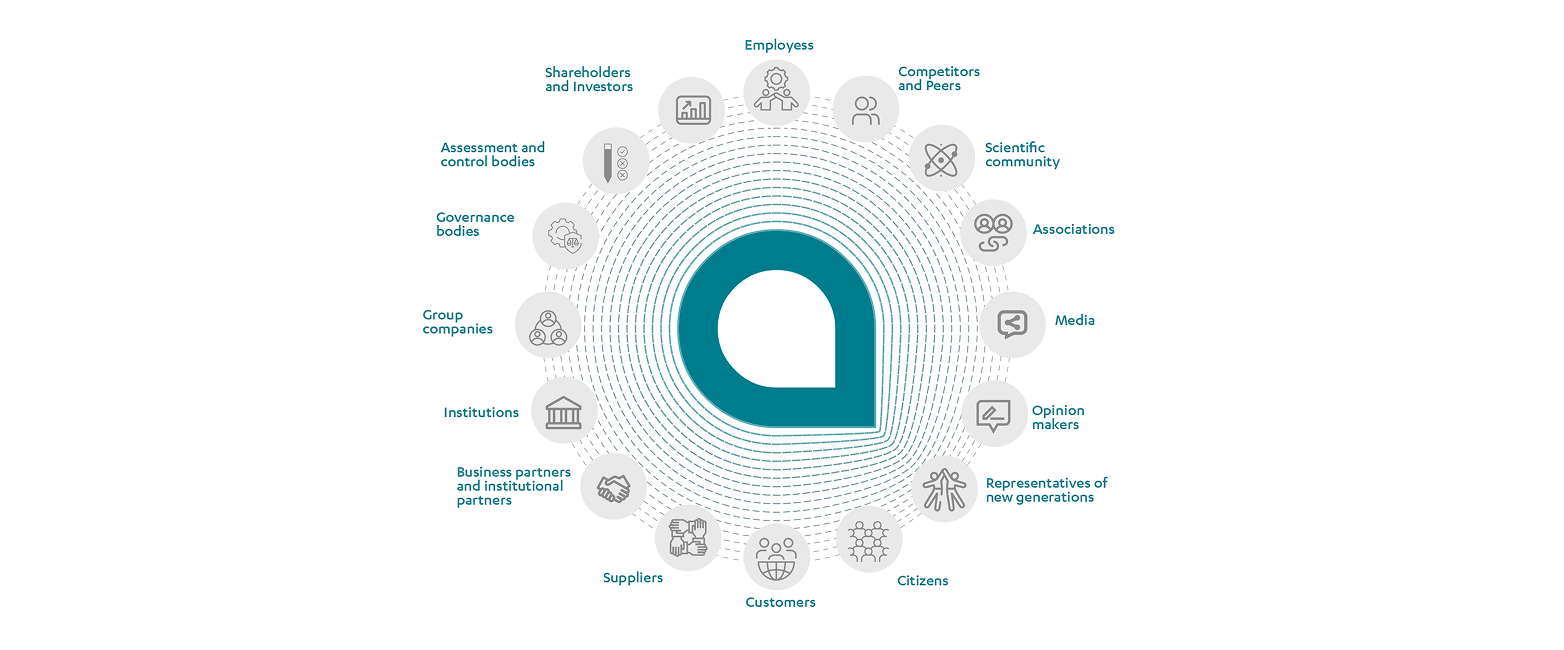For the evaluation of impact relevance a focus group has been set up involving the main categories of the Group’s stakeholders (employees, research entities, partners, suppliers, non-profit organisations and consumer associations, institutions, consulting firms, unions, peers, new generations) and relevant impacts generated by the Acea Group’s external business were identified.
As regards financial relevance, the Group risk assessment process methodology (ERM) was adopted, integrating and developing the scenarios in reference to sustainability dimensions. The analysis of these scenarios by risk owners, ERM focal points and the Group companies’ sustainability contact persons enabled identification of the risks and the opportunities represented by ESG issues on the Group’s business. Based on the analysis findings, all the ESRS environmental, social and governance issues proved to be relevant and are therefore subject to reporting in the sustainability report included in the Group Consolidated Financial Statements.


